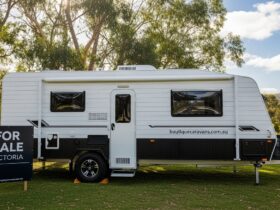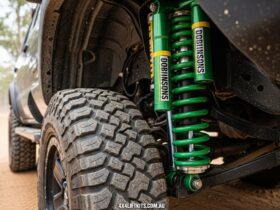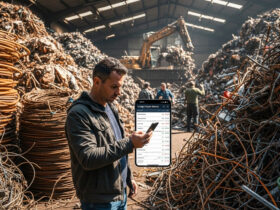Investing in a sewing machine is a significant decision that can enhance your creativity and productivity, whether you’re a hobbyist or a seasoned sewist. With so many options on the market, it’s essential to know what to look for to find a machine that suits your needs. This guide covers the key factors to consider when buying a sewing machine to help you make an informed choice.
1. Purpose and Skill Level
a. Intended Use: Identify the primary purpose of the machine. Are you looking to create garments, quilts, home décor, or crafts? Different machines are designed for specific tasks. For example, a quilting machine will have features tailored to handling multiple layers of fabric, while a basic sewing machine might focus on garment construction.
b. Skill Level: Consider your skill level and experience. Beginners might prefer a user-friendly machine with straightforward features, while more advanced sewists might seek a machine with specialized functions and greater versatility.
2. Types of Sewing Machines
a. Mechanical Sewing Machines: These machines use mechanical controls like knobs and levers. They are generally straightforward, reliable, and often more affordable. Ideal for beginners or those who prefer a more tactile approach to sewing.
b. Electronic Sewing Machines: Electronic machines feature digital controls and settings. They offer a range of built-in stitches and automatic functions. They are suitable for users who appreciate modern technology and advanced features.
c. Computerized Sewing Machines: These machines include a computer chip that allows for programmable functions, numerous stitch options, and customization. They often come with features like automatic thread cutting and needle threading, making them ideal for advanced sewists who want more control and convenience.
d. Overlock (Serger) Machines: Overlock machines are designed for finishing edges and seams, providing a professional look to garments. They can be used to sew, trim, and overcast edges in one step, which is particularly useful for working with knit fabrics and creating durable seams.
3. Essential Features to Consider
a. Stitch Options: Look for a machine that offers a variety of stitch options. Basic stitches like straight and zigzag are essential, but additional stitches such as buttonholes, decorative stitches, and overcast stitches can greatly expand your sewing possibilities.
b. Stitch Length and Width Adjustments: Adjustable stitch length and width allow you to customize your sewing according to the fabric type and project requirements. This flexibility is crucial for achieving professional results.
c. Needle Positioning: Machines with adjustable needle positioning offer greater control over sewing and quilting projects. This feature is particularly useful for topstitching, quilting, and sewing in tight spaces.
d. Feed Dog System: The feed dogs are the metal teeth that help move fabric through the machine. Look for machines with adjustable feed dogs or different feed mechanisms (e.g., drop feed dogs) to handle various fabric types and sewing techniques.
e. Built-in Needle Threader: An automatic needle threader can save time and frustration, especially for those with vision difficulties or those who sew frequently.
f. Adjustable Presser Foot Pressure: This feature allows you to adjust the pressure of the presser foot to accommodate different fabric thicknesses, from lightweight silk to heavy denim.
4. Throat Space and Bed Size
a. Throat Space: The throat space is the area between the needle and the right side of the machine. A larger throat space is beneficial for quilting and working with larger projects, as it provides more room to maneuver fabric.
b. Bed Size: Consider the size of the sewing bed. A larger bed provides more workspace and stability, which is especially useful for quilting and larger sewing projects.
5. Ease of Use and Comfort
a. User Interface: An intuitive user interface with clear controls and a well-organized display can make sewing more enjoyable and less frustrating. Look for machines with easy-to-understand settings and options.
b. Ergonomics: Choose a machine that feels comfortable to use. Consider the placement of controls, the ease of access to essential functions, and the overall design of the machine. A well-designed machine reduces strain during long sewing sessions.
c. Noise Level: While not always a major consideration, the noise level of the machine can impact your comfort and concentration. Look for machines that operate quietly if you prefer a quieter sewing environment.
6. Build Quality and Durability
a. Construction Materials: Check the materials used in the machine’s construction. Machines with metal components and sturdy frames generally offer better durability and stability compared to those made primarily from plastic.
b. Brand Reputation: Research the brand’s reputation for reliability and quality. Brands with a strong track record and positive customer reviews are more likely to provide a dependable machine.
c. Warranty and Support: Review the machine’s warranty to understand what is covered and for how long. A good warranty provides peace of mind and protection against defects. Additionally, ensure that customer support and repair services are readily available.
7. Accessories and Attachments
a. Included Accessories: Check what accessories come with the machine. Common accessories include presser feet (e.g., zipper foot, buttonhole foot), bobbins, needles, and seam guides. Having essential accessories included can enhance your sewing experience and save additional costs.
b. Compatibility with Additional Attachments: Consider whether the machine is compatible with a range of additional attachments and accessories. These might include quilting feet, embroidery units, or specialty presser feet. Compatibility can expand the machine’s functionality and versatility.
8. Budget Considerations
a. Set a Budget: Determine your budget before starting your search. Sewing machines are available in various price ranges, from budget-friendly options to high-end models with advanced features.
b. Cost vs. Features: Balance your budget with the features you need. While it’s tempting to opt for a more expensive model with all the bells and whistles, ensure that the features align with your sewing needs and preferences.
c. Value for Money: Consider the long-term value of the machine. A higher-quality machine may have a higher initial cost but can provide better durability, functionality, and satisfaction over time.
9. Testing the Machine
a. Try Before You Buy: If possible, visit a store to test different machines. Feel the controls, test the stitching quality, and assess the overall usability of the machine. Hands-on experience can help you gauge whether a machine meets your expectations.
b. Ask for Demonstrations: Request a demonstration of the machine’s features and functions. This can give you a better understanding of how the machine operates and how well it performs different tasks.
Conclusion
Buying a sewing machine is an exciting step that can significantly impact your sewing and quilting projects. By considering factors such as the machine’s intended use, features, build quality, and budget, you can make an informed decision that aligns with your needs and preferences. Whether you’re a beginner or an experienced sewist, choosing the right machine will enhance your creativity, productivity, and overall enjoyment of the sewing process.









Find Us on Socials